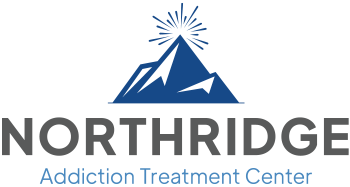What Is Harm Reduction?

At its core, harm reduction is a set of principles and approaches to substance abuse that prioritizes the immediate needs of people who use drugs and works to reduce harm and prevent overdoses.
Despite rampant misinformation about the methods and motives behind harm reduction and substance abuse prevention programs and receiving almost no federal funding, harm reduction approaches have proven to be cost-effective public health measures that save lives.
What Is Harm Reduction?
Harm reduction is a broad term that refers to practices, approaches, and programs aiming to reduce the harmful effects of substance abuse while maintaining the dignity and free will of the people receiving help.
Harm reduction acknowledges that all people who use drugs and alcohol require or are ready for addiction treatment. Instead, it focuses on providing health and social services for their immediate needs in ways that will reduce drug-related harm and prevent overdose deaths.
The Harm Reduction Model
The harm reduction model focuses on “meeting people where they are at” and addressing their current needs, substance use, and the conditions surrounding it.
The harm reduction model demands that the services and programs address specific individual and community needs while following the principles established by the National Harm Reduction Coalition.
Because the founders and creators of harm reduction designed it to be used worldwide in different settings and cultures, there is no universal formula or standard way to implement harm reduction.
Harm Reduction Therapy
Harm reduction therapy is an approach that combines harm reduction principles and techniques with other traditional, evidence-based therapies.
Many people immediately associate addiction treatment with complete abstinence from drugs or alcohol, but that isn’t always realistic right away. Integrating harm reduction in psychology practices and approaches can help lead people who use drugs to reduce their use and begin addressing other factors that trigger their urges to use.
Harm reduction therapy aims to provide support and resources to minimize drug-related harm to individuals and their loved ones. It also works to encourage positive habits and promote health changes that may lead to a reduction or complete stop in drug abuse.
One of the leading advocates of harm reduction therapy is Dr. G. Alan Marlatt, the founder of the relapse prevention model. He believed it offered the greatest hope of reaching people who didn’t respond to abstinence-based models.

Harm Reduction Principles
Harm reduction principles guide the development of programs specialized for each individual and community they serve. To be considered proper and effective harm reduction approaches, they must follow the principles established by the National Harm Reduction Coalition.
The eight principles of harm reduction are:
- Rather than condemning or ignoring drug use, accept it, and aim to minimize its harmful effects.
- Understand that drug use is complex and exists on a spectrum from total abstinence to life-threatening, and acknowledge that some drug use is inherently safer than others.
- Establish quality of life and expectations for the individual and surrounding community to better gauge the success of policies and interventions.
- Services, resources, and providers must remain non-judgmental and non-coercive; you cannot shame or force people into not using drugs.
- Ensure that people who are actively using drugs or have a history of drug use have a voice and input surrounding policies and programs created to serve them.
- Empower and reassure the user that they are the primary agents in reducing the harm related to substance abuse and sharing information and support with other users.
- Recognize and acknowledge how factors like race, gender, class, poverty, discrimination, past trauma, and other social factors contribute to addiction and access to treatment.
- The harm associated with drug use is never ignored, minimized, or dismissed.
All of these principles are to ensure and respect the dignity, humanity, and autonomy of the people harm reduction serves.
Harm Reduction Programs
As the founding principles state, harm reduction programs must cater to the needs and input of the people and communities they serve.
Different places need different harm reduction programs. For instance, a town suffering from an outbreak of blood-borne diseases like HIV, AIDS, or viral hepatitis needs different harm reduction programs than a college town experiencing an uptick in fentanyl-laced party drugs and overdose deaths.
Some examples of harm reduction programs include:
Syringe Services Programs (SSP) or Needle Exchange Programs (NEP)
Users can safely dispose of used needles and syringes and get access to sterile syringes. Syringe exchange programs also protect public health by removing potentially dangerous needles from the streets and reducing the transmission of blood-borne diseases.
Safe or Supervised Injection Sites
In addition to the dangers of sharing needles, there are still health risks when a person injects drugs, even with a new, unused syringe, which can cause injuries and health complications. Harm reduction workers can demonstrate how to do a safe and sterile injection, properly dispose of used drug paraphernalia, and administer first aid in case of an injury or overdose.
Overdose Prevention Tools and Training
There are two prongs to overdose prevention— checking drugs before you take them and what to do if an overdose is already in progress. Fentanyl test strips help detect counterfeit narcotics and cutting agents before ingesting them, reducing the risk of an accidental overdose. Harm reduction workers can show you how to use test strips and give you some to keep with you for the future.
If someone is overdosing on an opioid, Narcan (naloxone) can reverse the overdose until emergency help arrives. Harm reduction workers can educate users about the signs of an overdose and demonstrate how to administer naloxone.
General Health Services and Information
Many harm reduction programs offer health care options and services, including screenings for blood-borne diseases, sexually transmitted diseases, and other health conditions that may or may not be directly related to drug use. They also have pamphlets, information, and referrals for people ready to take the next step and receive addiction treatment.
Many harm reduction programs and centers offer various services or can direct you to the nearest place to find what you need. The National Institute on Drug Abuse (NIDA) has proven that recipients of harm reduction services are more likely to seek addiction treatment and commit to long-term recovery voluntarily.

Evidence-Based Addiction Treatment in Northridge, California
If you or a loved one are ready to take the next step towards a life free from substance abuse, Northridge Addiction Treatment Center can help you achieve life-long recovery.
Our beautiful residential treatment center in Northridge, California, offers you privacy and comfort so you can focus on healing and growth. Providing a dual-diagnosis program and medication-assisted treatment, you’ll work closely with our genuine, medically licensed staff to overcome your substance abuse. Our evidence-based addiction treatment plans, including relapse prevention strategies and techniques, are tailored to every resident’s needs ensuring each unique individual can learn and benefit from our care.
Our compassionate treatment specialists are eager to speak with you and welcome you on the path to recovery. Reach out to us today to begin your journey.
Find Meaningful Recovery
Our caring and compassionate specialists are eager to help you comfortably navigate this journey to recovery. Our individualized treatment plan, programs, and therapies may be a perfect match for you or your loved one. Let us assist you in living the happy life you deserve. It starts with a phone call.




